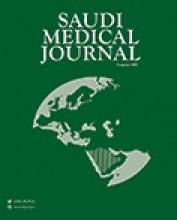Abstract
OBJECTIVE: To investigate the possible relationships between plasma bilirubin levels and concentrations of nitric oxide (NO), malondialdehyde (MDA), and erythrocyte antioxidant enzyme activities in newborn infants with hyperbilirubinemia.
METHODS: Thirty term (gestational age >/= 37 weeks) newborn infants with indirect hyperbilirubinemia aged less than 10 days were prospectively recruited in the Kahramanmaras Sutcu Imam University Neonatal Unit, Kahramanmaras, Turkey, between January and July 2007. Thirty randomly selected healthy newborns who had similar age and without clinical jaundice comprised the control group. Erythrocyte catalase, superoxide dismutase, glutathione peroxidase (GPx), glucose-6-phosphate dehydrogenase, and plasma MDA and NO concentrations were measured.
RESULTS: Both MDA and NO concentrations were higher in the study group than the controls (p=0.000). The mean activities of erythrocyte antioxidant enzymes were found to be lower in the study group compared with the controls (p=0.000). Furthermore, plasma bilirubin showed significant negative correlations with antioxidant enzyme activities but positive correlations with MDA and NO.
CONCLUSION: In this sample, infants with significant hyperbilirubinemia had elevated oxidative stress and disturbed antioxidant enzyme activity. Since these states have been shown to cause cellular injury in neonatal patients with indirect hyperbilirubinemia, such patients should be followed-up and undergo therapy to prevent the harmful effects of hyperbilirubinemia. Further studies are needed to investigate possible benefits of antioxidants in hyperbilirubinemia.
- Copyright: © Saudi Medical Journal
This is an open-access article distributed under the terms of the Creative Commons Attribution-Noncommercial-Share Alike 3.0 Unported, which permits unrestricted use, distribution, and reproduction in any medium, provided the original work is properly cited.






